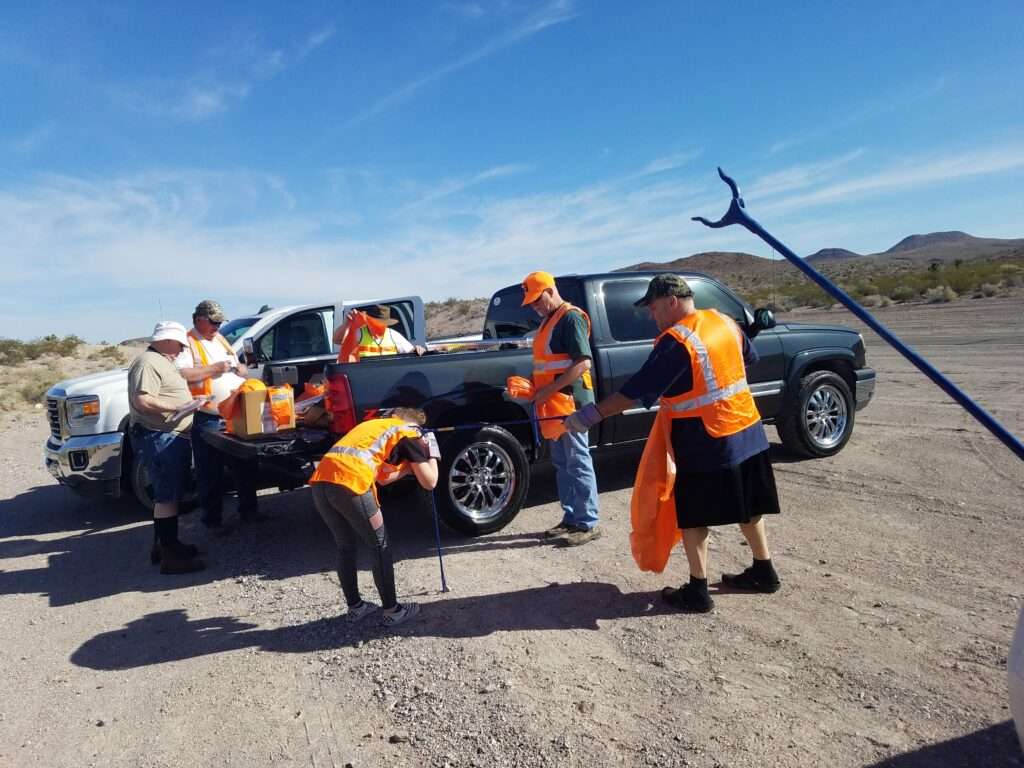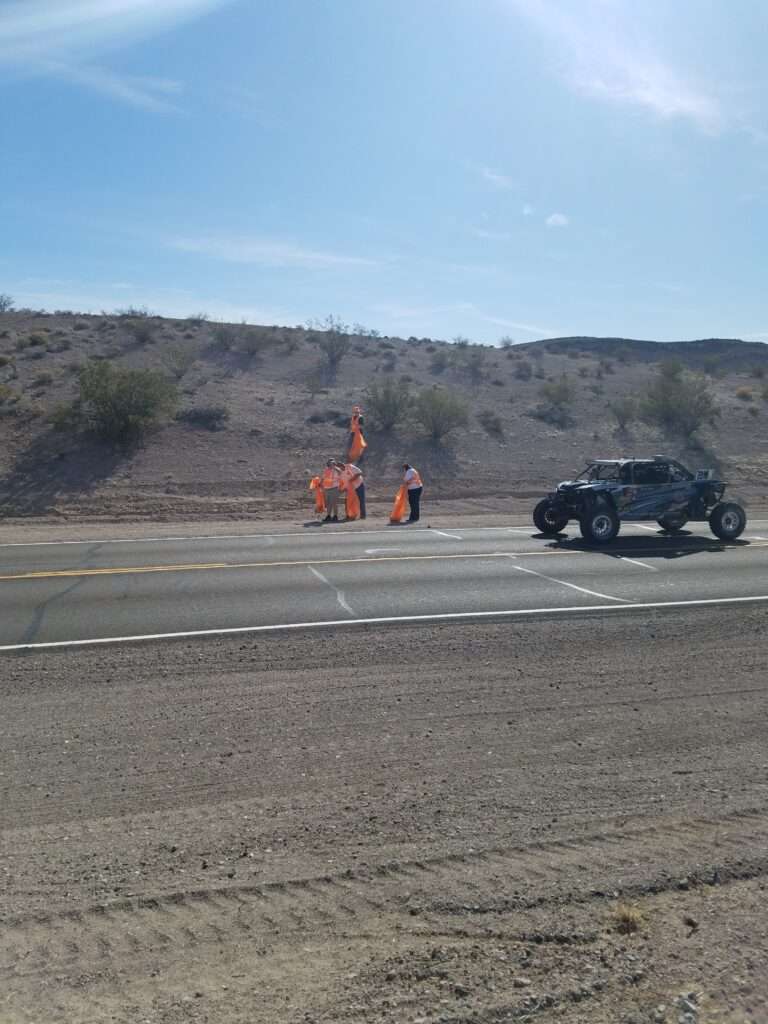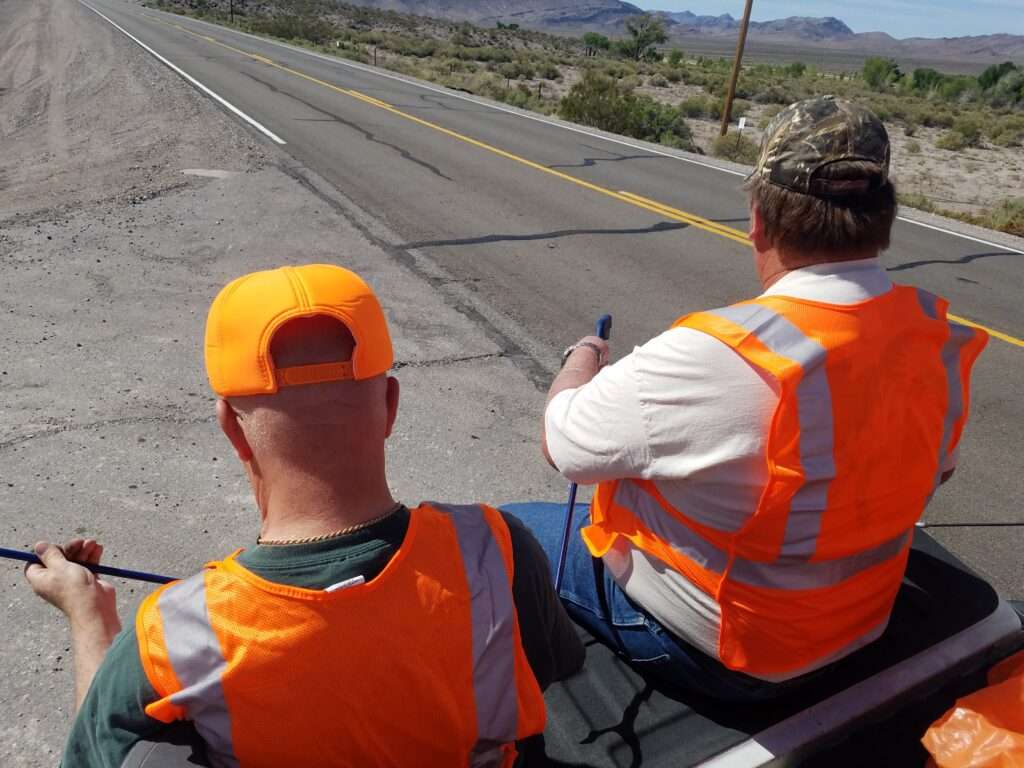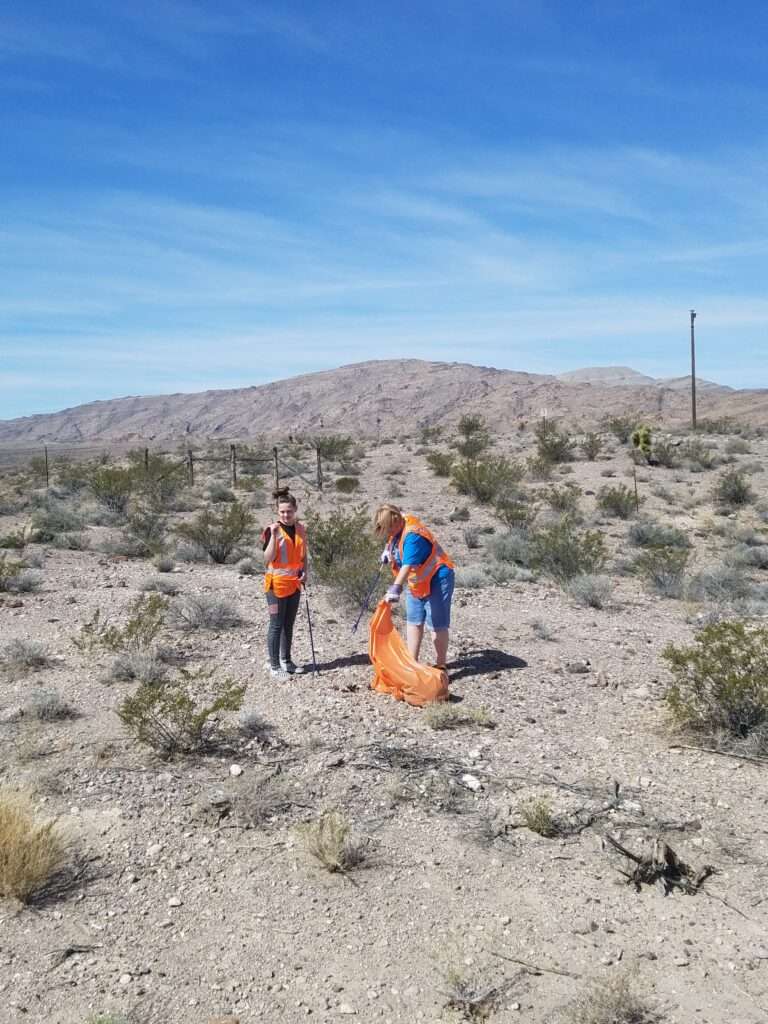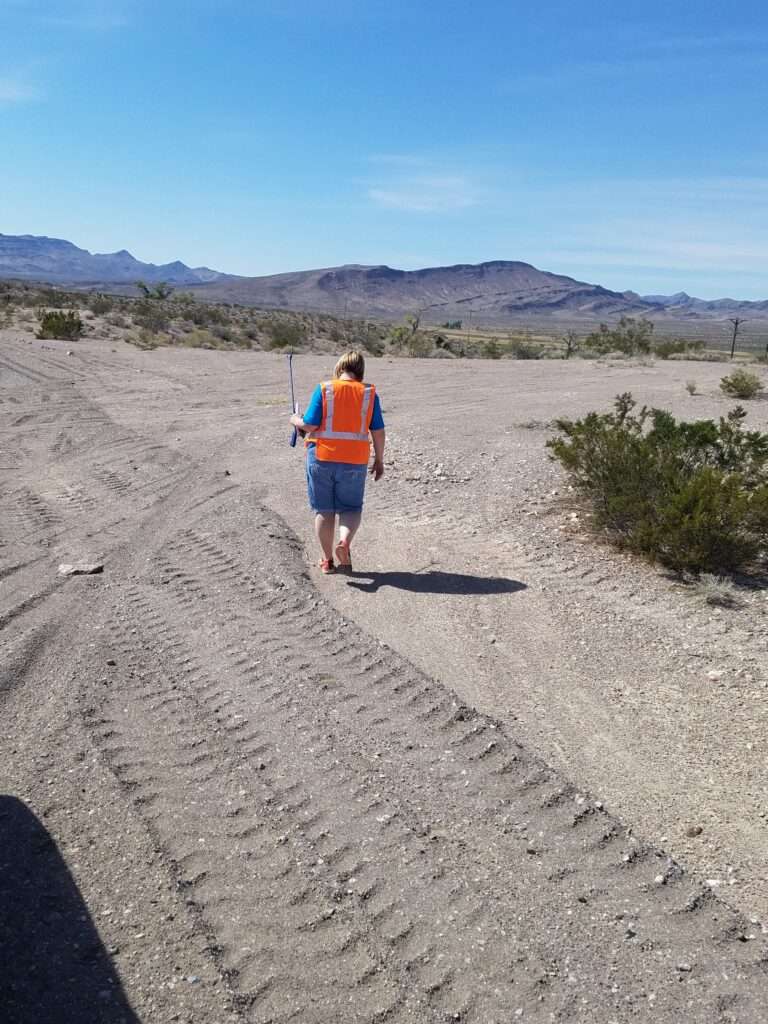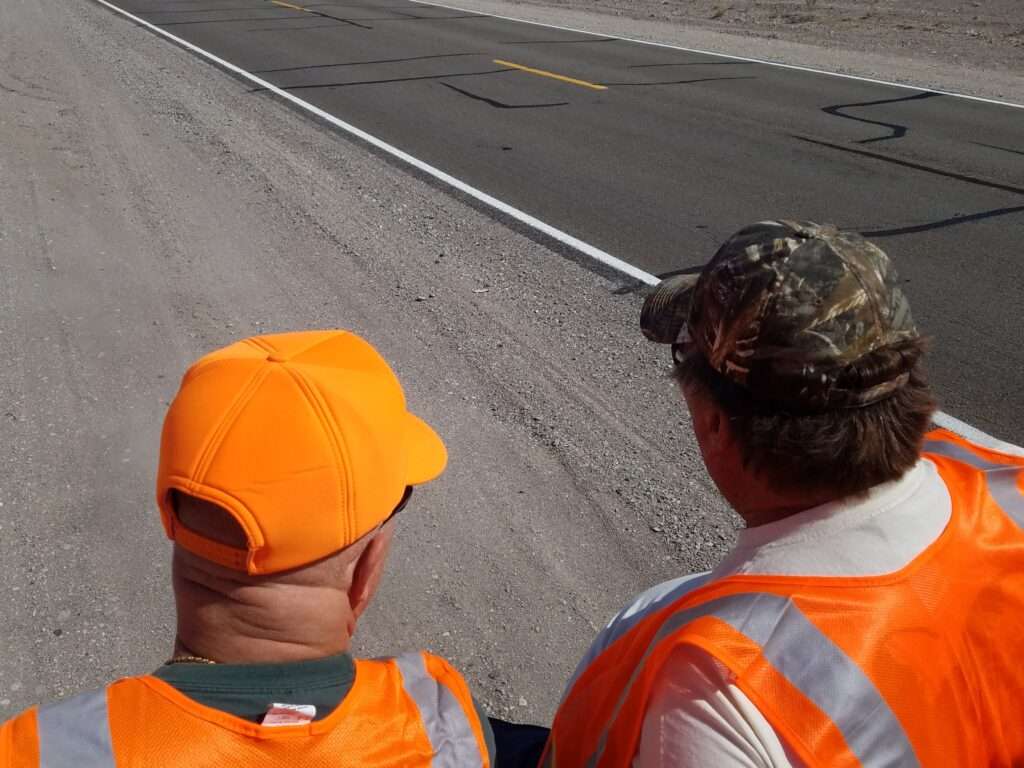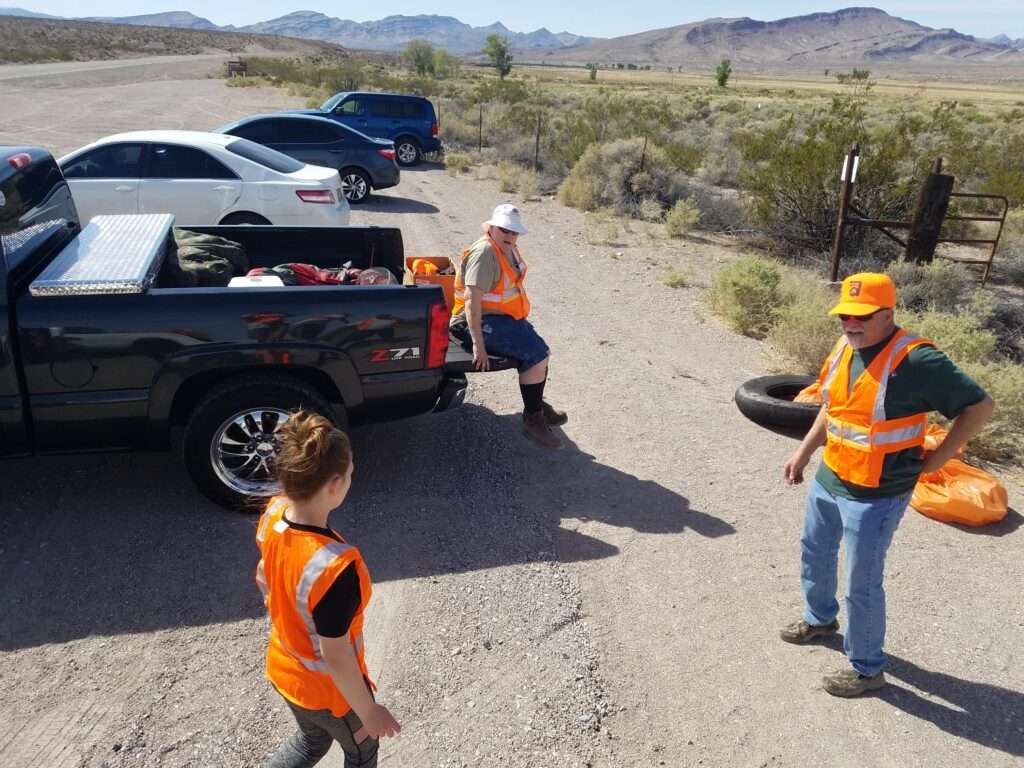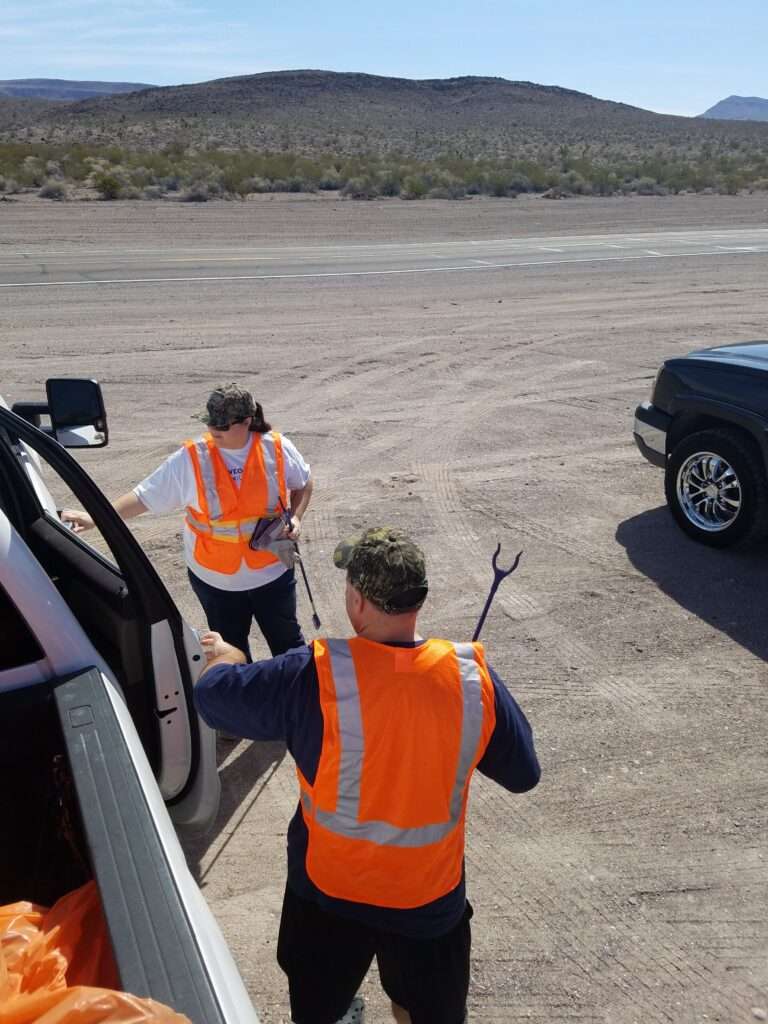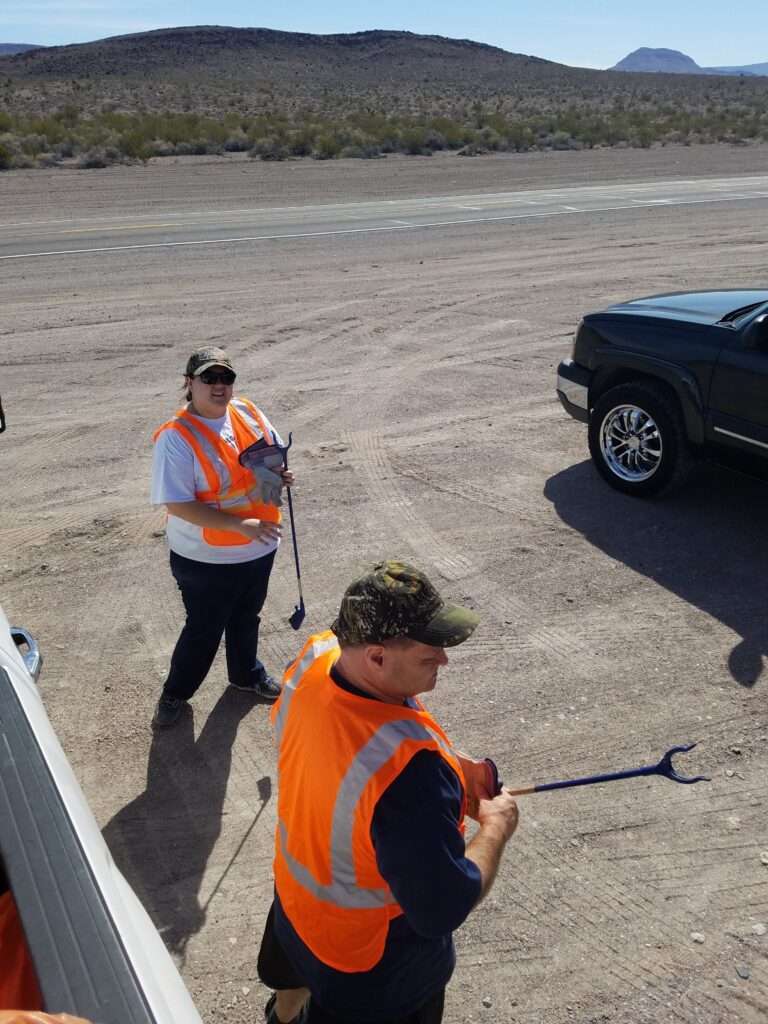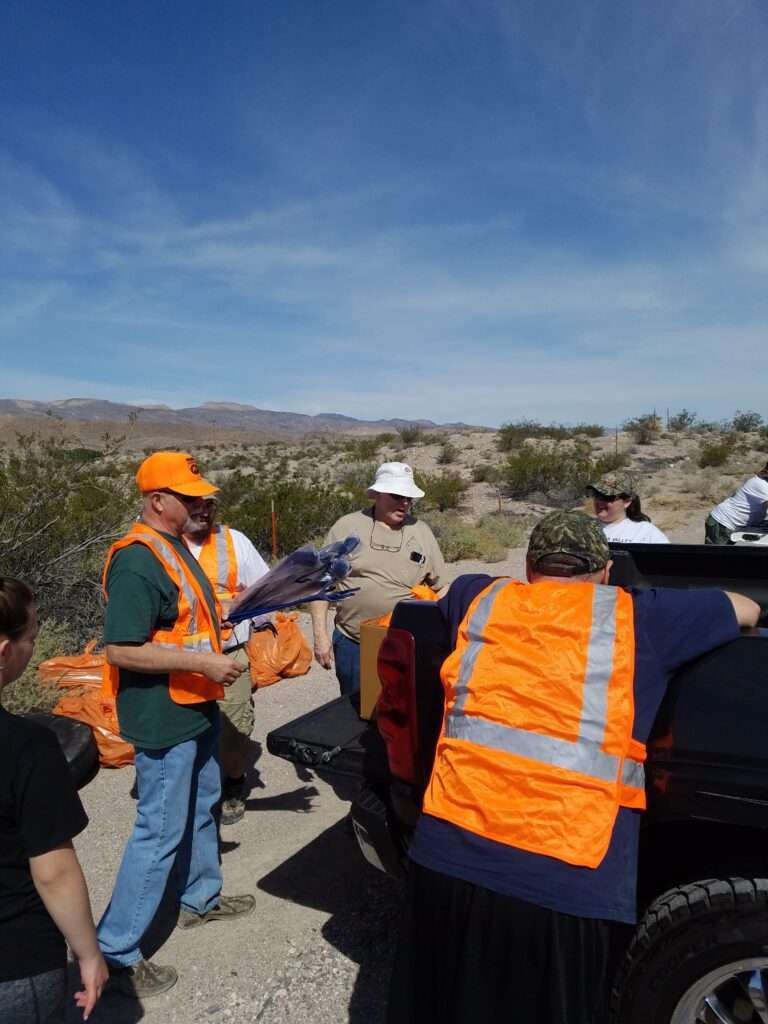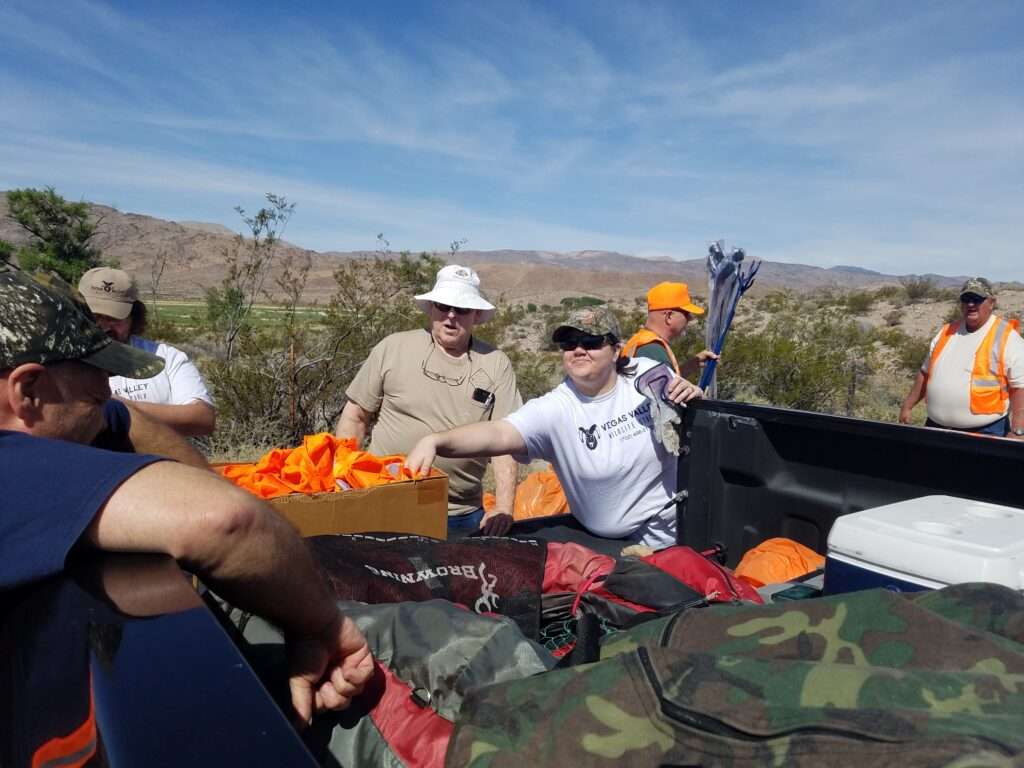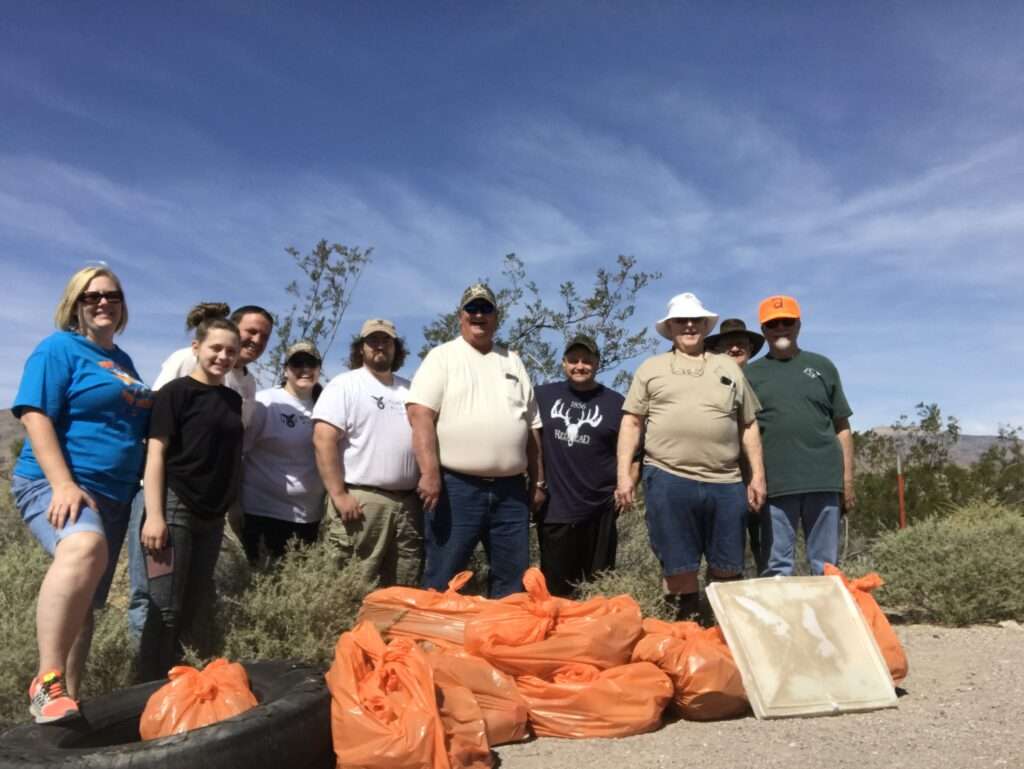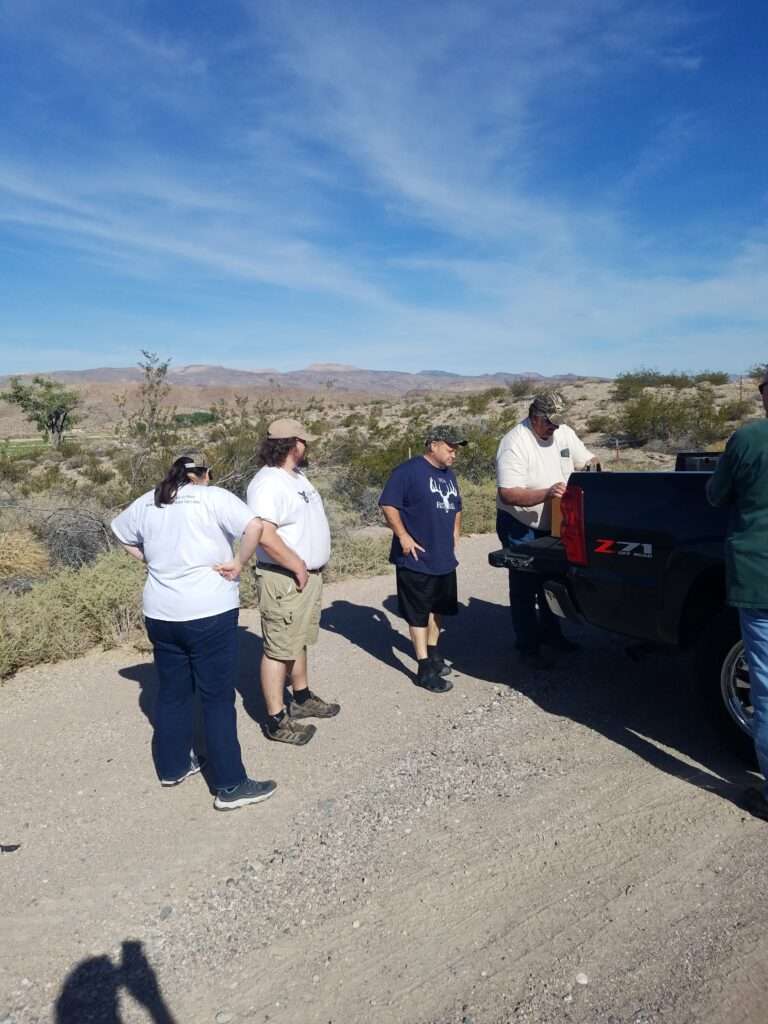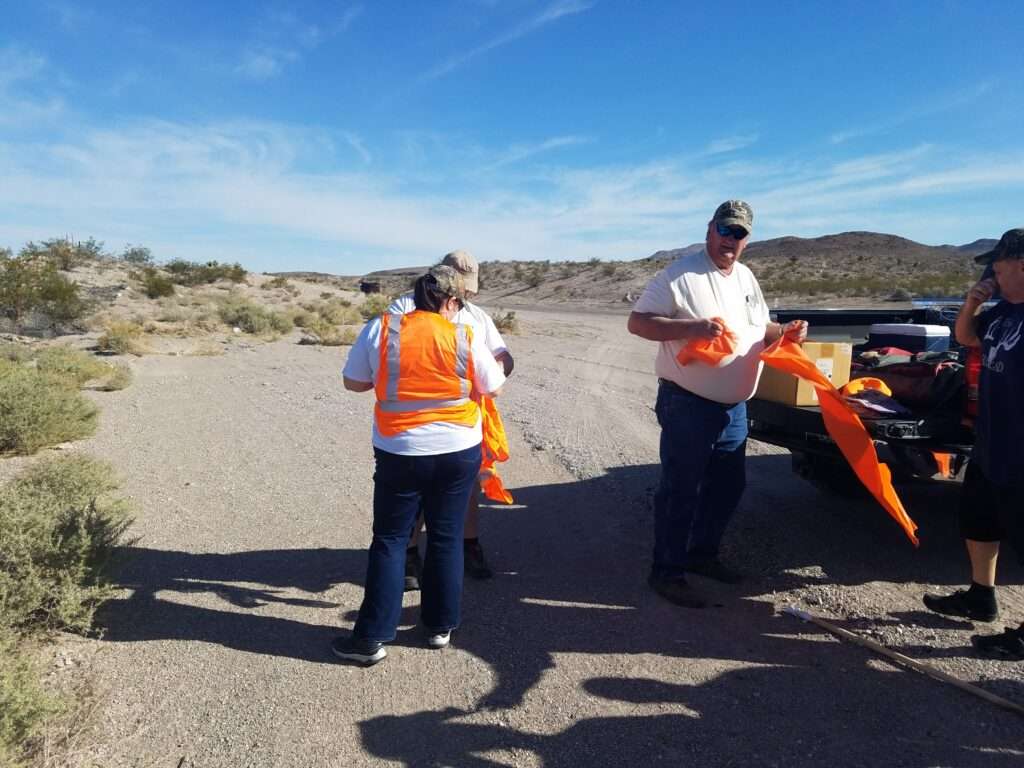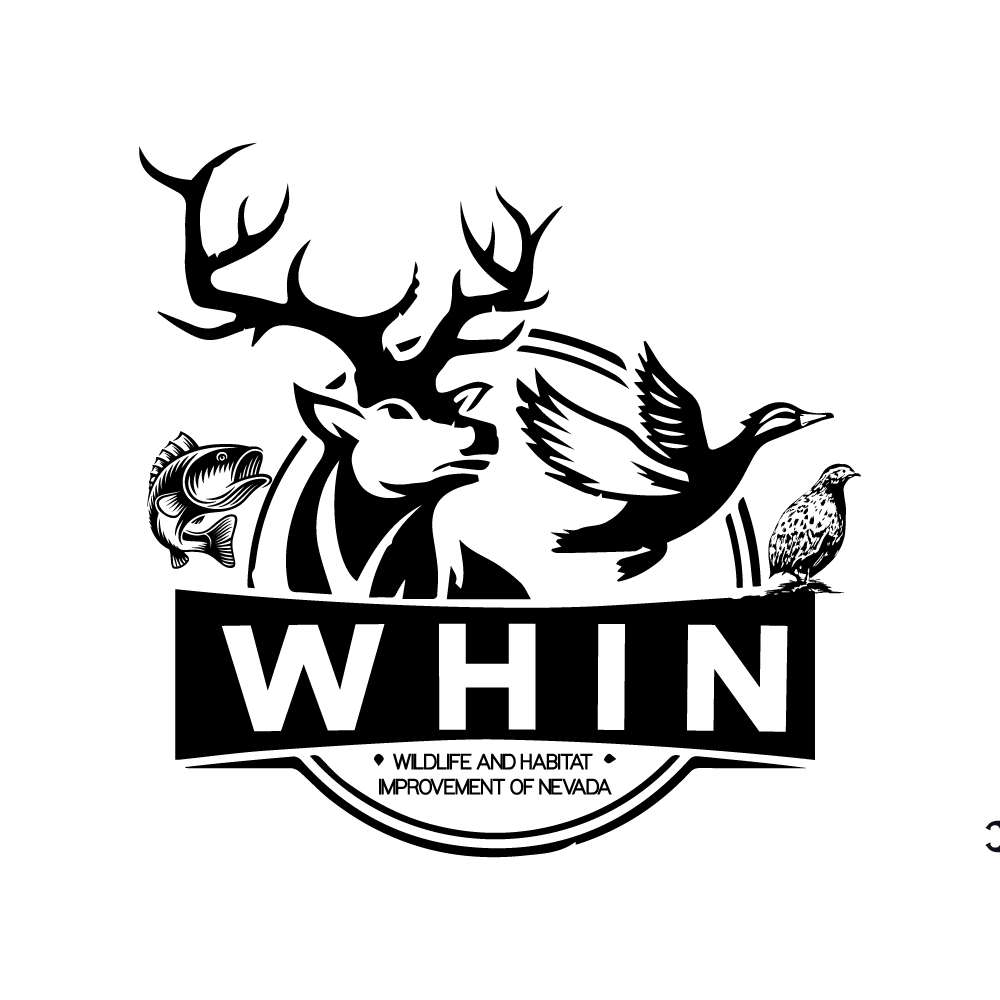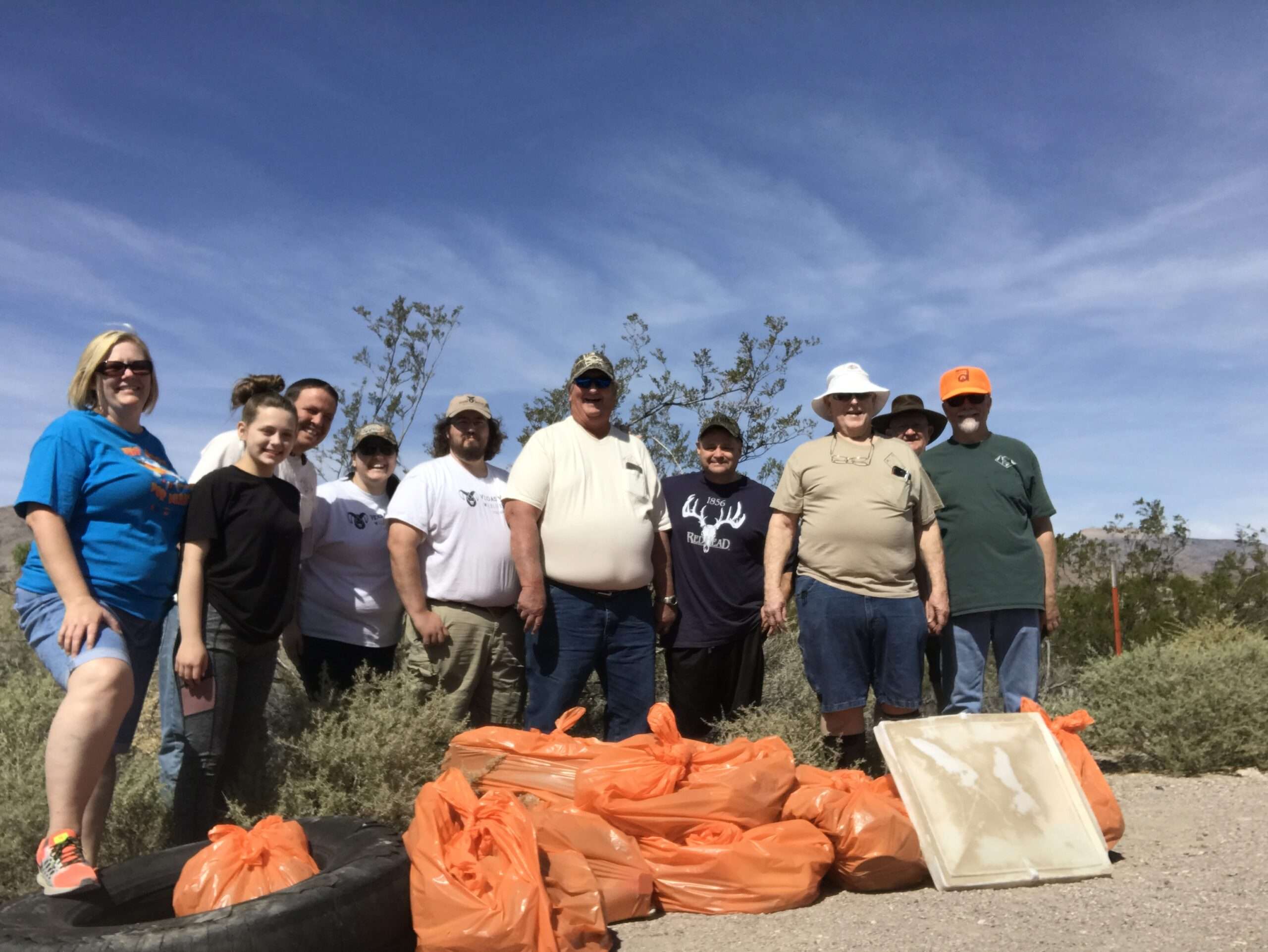2nd week of November: Overton WMA asked WHIN to assist them in repairing a pit blind. The hole was located and several fiberglass patches were applied. This was a small project. A big thank you to a couple of WHIN members who completed this project.
1st weekend in November: A group of volunteers from WHIN gathered to finalize the forgoing maintenance project. The old existing pipe was removed and replaced with 2” High Density Polyethylene pipe. New stainless steel 2” fittings were attached to the spring pipe. The HDPE pipe was rolled out along the ground surface and then sent into the existing trough. Rocks were piled over the end of the pipe to hold it in place inside the trough and to create an escape ramp for small animals should they become trapped inside. A 48’ by 48’ two-rail, pipe-rail fence was constructed around the trough to keep the surface water wildlife specific. The top rail is between 43” and 42” from the ground surface, and the bottom rail is between 23” and 22” from the ground surface. Rails are held in place by steel corners and upright posts. The distance between the posts is approximately 12’. Posts are held in place by having up to 2’ of post buried in the ground; posts are also held in place with 0.3 cubic yards of concrete per post. The 2” pipe was buried in a trench 2’ wide for ≤50’ near where it entered the trough. This was done to reduce the likelihood of damage from animals near the water source. Water was allowed to pour over the side of the trough saturating the ground on the downhill side.
3rd weekend in October: At the Dave Deacon Campground in the Wayne E. Kirch Wildlife Management Area a group of 8 volunteers fabricated 10 large metal campground shade structures. The fabrication was very skill intensive and was not a quick process. A huge thank you to the skilled volunteers who came up and welded the structure together. We will need to return and finish installing the wood to complete the shade structure.
2nd weekend in August: Four 1,800-gallon tank wildlife guzzlers were set upon graded and leveled tank pads measuring 16’x36’. The system when full will have a capacity of 7,200 available gallons of water. The entire system relies on rainfall exclusively for recharge and will accomplish this by collecting precipitation on a 60’x40’ on-ground steel apron. The apron is capable of collecting 1,496 gallons per inch of precipitation. Given the average rainfall in the area is approximately 10”, the apron is capable of collecting up to 14,961 gallons of water during an average rainfall year hedging its ability to withstand drought. The apron is set upon steel purlins which are anchored to the ground using a combination of angled steel and rebar. Water is made available at an external drinker set at the same level as the tanks. As the water column in the drinker declines, the water column in the tanks does so at the same rate. This is a simple design with no moving parts which tend to fail and therefore interrupt the common water flow. This maintenance free design, with no moving parts, minimizes any significant issues which limits the water resource to our wildlife. A 96’x96’ pipe rail fence will be constructed around the drinker to ensure the water is kept wildlife specific. This Project was accomplished by teaming up with NDOW and Mule Deer Foundation which resulted in over 30 volunteers working together to get this project completed.
3rd week of July: We went to Moapa Valley and refinished the WHIN sign. A new sign was installed. The posts that had rotted out were replaced and weatherized. New holes were dug and our sign was installed. A big thanks to the 4 volunteers that took time to get this sign back up.
2nd weekend of July: WHIN went to McFarland Spring to run new piping from drinker #3 and about halfway to drinker #4. This pipe weighs about 200+ pounds and is very difficult to move in rough terrain. We were very grateful to the laborers who helped us heft and roll this pipe up the hill. These drinkers are located in a wilderness area so we are not allowed to use any motorized equipment. This project was a great success with approximately 6 adult volunteers and 10 youth helpers.
4th week in May: WHIN went to McFarland Spring to run new piping from the spring head to drinker #1 and drinker #2. This pipe weighs about 200+ pounds and is very difficult to move in rough terrain. We are very grateful to the Back Country Horsemen Club who assisted us in moving this pipe via “horse power”. These drinkers are located in a wilderness area so we are not allowed to use any motorized equipment. This project was a great success with approximately 20 volunteers who contributed.
2nd week of May: The WHIN project trailer was upgraded with new shelf. This should help make projects go faster. A big thanks to Greg Clark and his crew to getting it done.
1st week of April: WHIN returned to McFarland Spring to see how far the water had flowed to the other drinkers and to check for more leaks. There were several more leaks found and repaired between drinker #3 and #4. We continued to check the rest of the line for damage to the water supply line and to check the floats to make sure they were in good working order. After checking the rest of the line for any issues, we decided that we needed to upgrade the drinkers from 30-gallon to 55-gallon drinkers and replace all floats and valves. This would take some planning and a lot of manpower to get it accomplished.
2nd Saturday of March: WHIN went to Lincoln County to do our spring adopt a highway clean-up, we met at Love’s Truck Stop and car-pooled to mile marker 32 where we started the clean-up. There was the usual trash of blown tires, pop cans, glass and plastic bottles and broken car pieces. We had 5 WHIN members come out to help pick up trash along the highway. We filled up almost 2 full truck beds of orange trash bags. It took over 4 hours to clean up, then we dropped off the trash bags at the pick-up point for NDOT to come and pick up. We then went to the Windmill for breakfast (a WHIN tradition).
